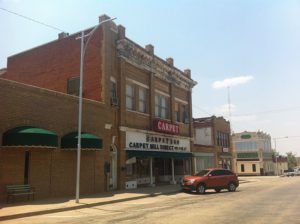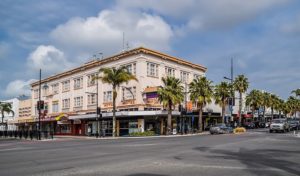Assessing Economic Resilience in COVID-19 Recovery: Challenges and insights from cross-national comparison

DOI reference: 10.1080/13673882.2021.00001110
By Will Rifkin, University of Newcastle, Australia in collaboration with Terry Clower, Director, Center for Regional Analysis, Northern Virginia Chair and Professor of Public Policy, George Mason University, USA, Jacob Irving, University of South Australia, and Keith Waters, George Mason University, USA
The onset of COVID-19 two years ago made many of us consider how we could help to address the situation by bringing to bear our expertise in the social sciences. Surely we were not going to formulate a new vaccine nor develop a more effective ventilator for hospital intensive care units. Additionally, it has been said that social science is predominantly “a rear view mirror”, looking mainly at what has happened to assess possible cause and effect relationships. But how could that approach provide useful insights about a pandemic and recovery afterward … while taking advantage of the international connections and international perspective of the Regional Studies Association?
A pandemic index
With the support of the RSA’s Small Grant Scheme on Pandemics, Cities, Regions & Industry, through the project , we sought to determine how to assess how a recent history of economic resilience and growth in certain industries could lead those industries to support a region’s economic recovery after the COVID-19 pandemic. Additionally, we wanted to know if available data on employment by industry sector at a regional level (e.g., NUTS 3) would enable us to conduct this analysis across a range of countries.
Employment figures in a small set of touchstone industries (both vibrant and vulnerable) were seen as indicative of regions that might need more help, or less, in economic recovery from COVID-19’s impacts. It was obvious that regions with a lot of employment in the travel sector, for example, would likely recover gradually as that sector slowly ramped up again as travel restrictions were reduced. But how readily could one characterise regions that would recover more quickly? And, as noted above, could this analysis look at not just a handful of regions in a single country but an array of regions across multiple countries?
Our multi-national, multi-disciplinary team brought different types of expertise to bear, combining economic modelling with experience in finding meaningful data that has consistent quality over time and, in this instance, in different regional and national contexts. An approach to modelling was sought that could evolve to formulate a resilience index that could be adapted to the shifting trajectory of the COVID-19 pandemic or to other such extensive global impacts. Also important was an ability to translate among different taxonomies for data from different countries and the fortitude to moderate expectations and to adjust the model to suit the data available.
How the project unfolded over time
Initial work began soon after the pandemic hit, in early 2020, with the formulation of an index to identify particularly vulnerable regions in Australia. That vulnerability was characterised by a large proportion of employment in the tourism sector, for example, and high levels of casual or part-time work. Economists elsewhere were attempting something similar. For example, the Brookings Institution in the US developed an index to assess the structural economic risk of the pandemic at the level of a metropolitan statistical area. These efforts are consistent with a trend that a recent issue of The Economist (23 Oct 2021) refers to as ‘instant economics’, efforts to use traditional and new forms of data that are readily at hand to inform timely policy responses in times of disruption.
Our joint effort on this index resulted from the development of a working relationship of Professor Terry Clower of George Mason University’s Center for Regional Analysis with Dr. Anthea Bill and myself (Professor Will Rifkin) of the Hunter Research Foundation (HRF) Centre at the University of Newcastle (Australia). This connection was facilitated by Professor Andrew Beer of the University of South Australia and former chair of RSA.
The analysis for this pandemic vulnerability index was completed in a couple of months. The effort was limited to Australian data, and it received attention from a number of media outlets around the country. That suggested that the line of work was of interest beyond the academic world. We had optimistically (and perhaps defensively) characterised the index as ‘version 1’. To progress things, Andrew Beer alerted us to the RSA’s pandemic research grants and suggested attempting to formulate a refinement of the vulnerability index to address data of interest to RSA members and regional policymakers in other countries. This refinement and extension, Terry suggested, should look at the potential for economic recovery. He recommended a focus on attempting to predict such resilience by the level of employment in a region in industry sectors that had seen strong growth in the past decade. So, the effort would retain the shift-share and location quotient assessments of the vulnerability index. Restraining the focus to employment would help to limit the amount of time and energy spent in chasing compatible and comparable data sets in different countries.
The proposed research drew on Terry’s strength in regional economic modelling and history at the HRF Centre of assessing regional wellbeing in light of our region’s natural disasters and closure 20 years ago of BHP’s massive steel mill complex. The HRF Centre had recently completed a broad review of potential indicators of regional wellbeing for a local government seeking to assess the impact of their social support programs. As the pandemic developed, that literature review was being extended by a postdoctoral researcher looking at social and economic indicators of resilience to augment the HRF Centre’s efforts to raise funds to develop a regional dashboard. The dashboard development was to be consistent with the work of Professor Rob Kitchin, Maynooth University Faculty of Social Sciences in Ireland, identifying a minimal set of data that can give policymakers, business operators and residents a sense of how a region is doing and what its historical trajectory suggests about how it responds to internal and external forces. So, the pandemic index effort emerged from several intersecting streams of consultancy and research.
We proposed to the RSA that a new index focusing on economic recovery would be designed for a cross-national application. Our analysis was intended (to quote our proposal) to “include any OECD nation with accessible, publicly available data with sufficient industry detail and geographic disaggregation to allow for meaningful regional assessments of risk and propensity for early recovery from the economic consequences of a pandemic.” The aspiration was to project which regions would find it difficult to recover from COVID-19 disruptions. However, it had a long-term goal to develop a modelling approach that could be adapted to provide rapid insight for policymakers during future pandemics by drawing on pre-existing economic data to assess which regions might need the most help in economic recovery.
Terry and his staff researcher, Dr. Keith Waters, took on collating and analysing US data to determine which factors to include in the index. That analysis looked at emerging data in the US on economic performance as the pandemic progressed. This sort of element has been becoming more available due to the rapid release of economic data during the pandemic by national statistical agencies and private providers, such as data on daily travel from Google and Apple and data on purchases that is released by credit card companies.
Comparative international data?!
Assembling data from countries aside from the US fell to Andrew Beer’s research staff member, Jacob Irving, working with my guidance. We accepted an offer from RSA headquarters for names of researchers in different countries who would have useful contacts in statistical agencies in OECD countries. We were also assisted by an expert consultant in New Zealand, Benji Patterson, who had been referred to me by a NZ colleague whom I had met at a conference.
In pursuing this multi-national data, Jacob found aspirations for consistency that were not matched by reality. The search yielded only six OECD countries that proved to have industry categories that were suitably consistent, along with figures for employment in those sectors at the NUTS 3 level that were sufficiently recent (post-GFC but pre-pandemic), for our team’s purposes. The search was not exhaustive, but the time-consuming nature of finding appropriate datasets at the desired granularity prevented us from including further countries in the analysis.
The data employed at the NUTS 3 regional level and NACE level 2 breakdown of industry sub-sectors was not available through the OECD or Eurostat databases. In going from country to country in search of data, Jacob was faced with reconciling variations in geographic and industry sector terminologies, assessing data tools available from each country’s statistical authorities, and then facing the question of whether the data were publicly available. The criteria for what data would be needed had a little flexibility – balancing the level of resolution desired for the modelling against the level available in a sufficient number of countries to make the comparison worthwhile. Questions posed to statistical authorities revealed that higher resolution data (in terms of space, time and industry sector) lacked reliability. Such challenges meant that larger EU countries, like France and Germany, were left out of the analysis.
To identify regions that may experience prolonged economic pain, Terry and Keith developed a recovery index comprising three components and up to 11 industries, depending on data available in a given country. The industries selected included food manufacturing; non-metallic mineral product manufacturing; infrastructure construction; warehousing; professional and technical services; information services; financial services; insurance carriers; public administration; air transportation; and travel lodging. In practice, the 11 industries were often aggregated from sub-sectors to ensure that the metric would be sufficiently comparable across countries.
The analysis yielded a list of regions in each of six countries with the potential for the greatest resilience, according to the index, and those that the analysis suggested would face the toughest road to recovery. We then sense-checked the results by reading the economic profiles of a small sample of these localities and by looking at the media coverage that could address how they were fairing economically as the pandemic had progressed.
The region around Heathrow Airport in the UK seemed to be taking a big hit due to reductions in travel (Hounslow, England). A small town in rural Texas with a mix manufacturing, oil and gas development, agriculture, and wind farms was near the top of the list of the most resilient communities for the US (Sweetwater, Texas). A tourist region on the Alaskan coast was expected to face a tough time (Ketchikan, Alaska), the index and media coverage suggested, but the tourist area of Gisborne, New Zealand had tapped into a domestic travel market and was doing better. Ireland’s eight regions came out in rank order of how their economies have been doing more generally. We cannot say that the results were so much surprising as revealing, highlighting important factors in a region’s suite of industries and the agility of those industries.
A conference and a webinar presentation were organised by the team in RSA headquarters. A suitably international audience attended. Our co-presenters engaged well with the topic, with rich discussion during the question and answer exchanges. Particular attention was received in relation to inconsistencies in data across countries, the element that absorbed much of Jacob’s effort. Unanswered questions included the extent to which the size and quality of a region’s healthcare network could contribute to economic recovery.
Hounslow, England – The area just east of Heathrow Airport received the lowest PRRET index rating, for the least resilient economy in the UK.

Sweetwater, Texas – Top-rated town in the US in the PRRET index: quiet streets but a resilient economy.

Ketchikan, Alaska – A hard-hit town overly reliant on tourism, Ketchikan, Alaska rated low on the PRRET index.

Gisborne, New Zealand – The tourism economy of Gisborne, New Zealand pivoted during COVID toward the domestic market, providing economic resilience for the region.

Not just our problem
This experience has doubtless had resonances for many researchers attempting cross-national comparisons or trying to adapt a study conducted in one country to their own national context. For me, the parallel arose in consultancy work on the circular economy that I engaged in this year. We were employing the City Scan online tool developed by the Netherland-based consultancy, Circle Economy, to prioritise which aspects of the economy in our region of Australia were most likely to support greater ‘circularity’. That is, should local governments in the region who are aiming to reduce carbon emissions put more effort into supporting the recycling of food waste from restaurants or into facilitating the conversion of fly ash from coal-fired power stations into input for the cement industry?
Of course, policymakers want a clear answer, an unequivocal number, or the name of an industry sub-sector and preferred policy intervention. This topic was commented on by Eli Devons, the UK’s chief statistician during World War II, likening such analysis to the divining practices of African witchdoctors. In my team’s work, specific recommendations proved to be difficult to land on, with estimates of domestic material consumption for a particular metal, for example, broken down by industry sector at the regional level differing by a factor of up to 10 or more.
With both projects – the pandemic resilience index and the circular economy, it is not hard to conclude that one can indeed collect figures to fill a spreadsheet. However, those figures may not be entirely meaningful, especially when operating in different national settings. The availability of useful data in one country does not, of course, mean that such data is available and reliable in another, equally advanced country.
The type of data needed reflects the drivers for cross-national comparison. Such drivers can represent a researcher’s line of work, the demands of an international agency, or a Ph.D. student’s aspiration to formulate a new model. Cross-national comparisons, generally, are becoming more possible with increased capacity to gather and analyse data, such as by multi-national corporations like Apple, Google, and credit card companies. It can be argued that cross-national comparisons are also becoming more important, with increasing globalisation – a force that can be understood to have accelerated the spread of the COVID-19 virus. This combination of growing data and expanding impacts was seen in the Global Financial Crisis, as well. Taking the good with the bad, the current international push to reduce carbon emissions in the face of climate change represents an opportunity to boost harmony among data sets across nations, such as on the use of materials and energy and the subsequent flows of waste and atmospheric pollution.
These efforts will doubtless face some of the data challenges underlined in our project to develop a pandemic resilience index and test it on multiple countries. The project has also illustrated the value of international collaboration within the team, the value in liaison with colleagues to assist in identifying data sources or to comment on the work, and the value in the support from international bodies, like the RSA.